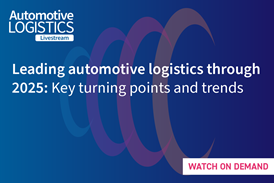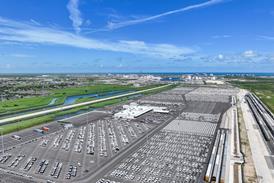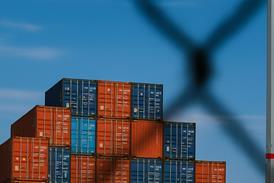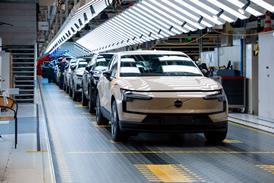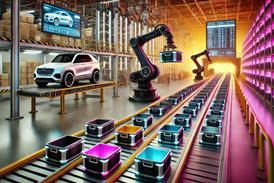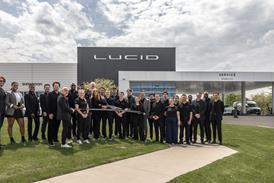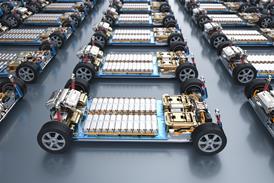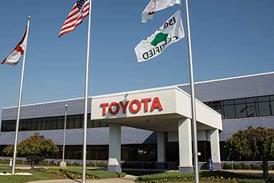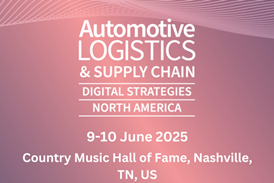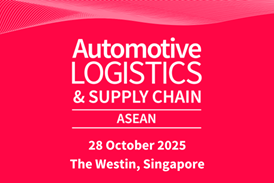All Analysis articles – Page 2
-
 Analysis
AnalysisEurope hits back at Trump’s steel and aluminium tariffs
EU approves tariffs on $20bn of US goods over Trump’s steel and aluminium duties, effective 15 April.
-
 News
NewsJLR restarts US shipments following pause due to tariffs
JLR restarts all US-bound shipments after pause due to Trump’s 25% import tariffs on finished vehicles.
-
 Analysis
AnalysisWhat “Liberation Day” tariffs mean for the automotive supply chain
New US automotive tariffs disrupt supply chains, raise costs, and spark global manufacturing and logistics realignment.
-
 Feature
FeatureFVL North America 2025: Recap blog
Follow our recap blog from FVL North America 2025 as OEMs, logistics providers, and tech leaders share insights on EV logistics, capacity and digitalisation.
-
 Analysis
AnalysisThe auto tariff rollout – what happens when
Trump’s 25% auto tariffs hit April 2, disrupting the industry. Experts warn of supply chaos, plant shutdowns and soaring vehicle prices.
-
 Analysis
AnalysisAutomakers race to beat the April 2 deadline in the US tariff countdown
Automakers race to reroute vehicles before 25% US auto tariffs hit on April 2, straining ports, logistics networks and cross-border supply chains.
-
 Feature
FeatureAI, talent and sustainability reshape EU auto logistics
From control towers to packaging reform, Europe’s auto supply chain focuses on agility, inclusivity and sustainability.
-
 Feature
FeatureRenault optimises logistics with circular packaging
Renault is reducing CO2 and logistics waste by embedding circular economy and reuse strategies into its packaging operations.
-
 Video
VideoRed Sofa | Sustainability meets efficiency in automotive packaging
Driven by the rise of EVs, the automotive industry is rethinking packaging – placing sustainability, cost efficiency and innovation at the core of ongoing discussions.
-
 Analysis
AnalysisCompact bumper packaging halves truckloads and emissions
A compact packaging solution for bumpers reduces freight costs, storage needs, and CO₂ emissions while simplifying assembly.
-
 Analysis
AnalysisEuropean Automotive Logistics Market Report 2025-2035
Download this comprehensive report with succinct industry analysis, market forecasts, company market share evaluations, and strategic recommendations
-
 Analysis
AnalysisTrump’s sanctions relief could revive Russia’s car industry
Trump’s Ukraine-Russia ceasefire deal could reshape automotive logistics, reopening Russia’s market to Western brands and reviving transit routes.
-
 Analysis
AnalysisRecyclability guide boosts packaging sustainability
Discover expert-backed guidelines for recyclable transport packaging and learn how to enhance sustainability in supply chains.
-
 Feature
FeatureEurope’s EV supply chain shifts to nearshoring and localisation
Nearshoring and battery localisation are reshaping Europe’s EV supply chain as OEMs navigate costs, tariffs, and Chinese competition.
-
 Feature
FeatureOEMs and logistics providers face stricter packaging rules
Germany’s Packaging Act forces automakers to reduce waste, register materials, and comply with stricter recycling and reuse regulations.
-
 Analysis
AnalysisTrump tariffs: A timeline of impacts on automotive logistics
From tariffs to trade disruptions, Trump’s presidency is impacting automotive logistics. Explore the timeline of key developments.
-
 Analysis
AnalysisBMW pioneers hydrogen-powered trucks to transform European freight
BMW’s H2Haul pilot launches hydrogen fuel cell trucks across Europe, enhancing logistics efficiency and sustainability with rapid refuelling and innovation in energy systems.
-
 News
NewsMazda invests $148m to boost Thai exports to ASEAN market
Mazda invests $148m to expand Thai production, boosting exports across ASEAN and Japan while adding new EV and hybrid models.
-
 Analysis
AnalysisTrump’s reciprocal tariffs could disrupt automotive supply chain
Trump’s reciprocal tariffs could disrupt global automotive supply chains, raising costs for OEMs and reshaping trade flows.
-
 Analysis
AnalysisEurope makes strong investment in artificial intelligence for future innovation
The EU’s €200 billion InvestAI Initiative is set to transform Europe’s industries with AI-driven solutions, enhancing data-driven decision-making and optimising manufacturing efficiency.



